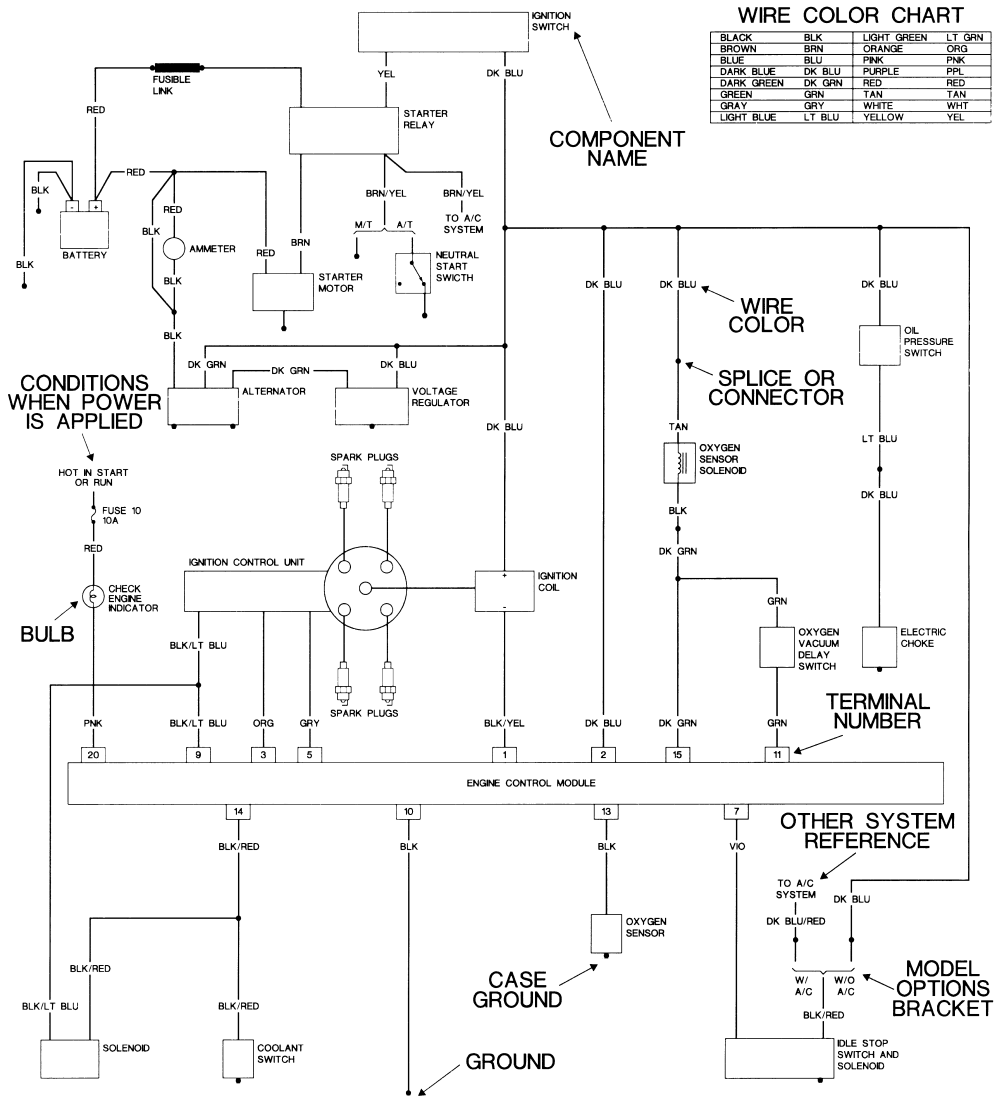If your car is experiencing electrical issues, you may want to troubleshoot the alternator. Check for warning lights and abnormal noises to identify potential problems.
This guide will cover the troubleshooting steps for diagnosing and fixing alternator issues to ensure your vehicle’s electrical system runs smoothly. Are you experiencing electrical problems with your car? If so, the issue could be related to the alternator. The alternator is a crucial component of your car’s electrical system that generates power for the battery and other electrical components.
If you notice warning lights on your dashboard or strange noises coming from under the hood, it’s essential to diagnose and address any potential alternator issues promptly. In this guide, we will walk you through the troubleshooting steps to identify and fix common alternator problems, helping you keep your car running smoothly and reliably. Whether you’re a DIY enthusiast or seeking to understand potential issues before consulting a mechanic, this guide will equip you with the knowledge to tackle car electrical problems efficiently.

Credit: www.autozone.com
Signs Of Alternator Problems
The alternator is a crucial component of your car’s electrical system. When it starts malfunctioning, it can cause various issues that may leave you stranded on the road. Being able to recognize the signs of alternator problems can help you take prompt action to prevent major breakdowns. Here are some common signs that indicate potential alternator issues:
Dimming Lights
Dimming headlights or interior lights while driving can be a telltale sign of alternator problems. If you notice your lights flickering or becoming noticeably dimmer, it could indicate a failing alternator.
Strange Noises
Another sign of alternator trouble is the presence of strange noises, such as grinding, whining, or squealing coming from the engine compartment. These noises often point to failing bearings or worn-out internal components of the alternator.
Battery Issues
If you experience frequent battery issues despite having a relatively new battery, it may be due to a faulty alternator. This can manifest as difficulty starting the car, a weak or dead battery, or repeated jump-starts.
Checking The Alternator
When it comes to troubleshooting car electrical problems, checking the alternator is an essential step. The alternator is responsible for charging the battery and powering electrical systems in the vehicle. Identifying and fixing any issues with the alternator can prevent potential breakdowns and ensure the smooth operation of your car.
Using A Multimeter
One of the most effective ways to check the alternator is by using a multimeter. To do this, start by setting the multimeter to the voltage setting. Then, connect the positive lead to the positive terminal of the battery and the negative lead to the negative terminal. Next, you should start the car and rev the engine. While doing this, observe the multimeter reading. A healthy alternator should produce a voltage between 13.8 and 14.4 volts.
Inspecting The Belt
The alternator belt plays a crucial role in the functioning of the alternator. Begin by visually examining the belt for any signs of wear, cracks, or looseness. If you notice any damage or slack, it may be affecting the performance of the alternator. Consider tightening or replacing the belt to ensure proper operation of the alternator.
Checking The Battery Voltage
Another way to test the alternator is by checking the battery voltage. Start by turning off the engine and disconnecting the battery. Then, use the multimeter to measure the voltage of the battery. A fully charged battery should read around 12.6 volts. If the voltage is significantly lower, it could indicate an issue with the alternator.
Common Alternator Issues
Car electrical problems can often be traced back to issues with the alternator. The alternator plays a critical role in charging the battery and powering the electrical components of your vehicle. However, like any other component, the alternator can encounter problems over time. In this section, we will explore the most common alternator issues and provide an alternator troubleshooting guide to help you diagnose and fix these problems.
Faulty Voltage Regulator
A faulty voltage regulator is one of the primary causes of alternator issues. The voltage regulator ensures a consistent flow of electrical power to the battery and other components. When the voltage regulator malfunctions, it can result in an overcharging or undercharging battery, both of which can lead to electrical problems in the car.
Signs of a faulty voltage regulator:
- Dim or flickering headlights
- Intermittent or weak electrical power
- Malfunctioning gauges or warning lights
If you suspect a faulty voltage regulator, it is essential to test it using a multimeter to measure the voltage output. If the readings are inconsistent or outside the specified range, it may be time to replace the voltage regulator to restore proper charging functionality.
Worn-out Brushes
The brushes in the alternator are responsible for transferring electrical currents to the rotating components. Over time, these brushes can wear out due to friction, leading to poor electrical contact and reduced charging efficiency. When the brushes become worn-out, the alternator may not generate enough power to charge the battery adequately.
Signs of worn-out brushes:
- Intermittent charging
- Slow cranking of the engine
- Dim interior lights
To determine if worn-out brushes are causing the issue, the alternator must be disassembled. Inspecting the brushes for wear and tear can help you identify if they need to be replaced. It is recommended to replace the entire brush assembly to ensure optimal performance.
Defective Diode
The diode inside the alternator is responsible for converting alternating current (AC) produced by the alternator into direct current (DC) that the vehicle’s electrical system requires. When a diode becomes defective, it can disrupt the flow of electrical current, leading to various electrical problems.
Signs of a defective diode:
- Unusual noises from the alternator
- Battery drain even when the vehicle is not in use
- Electrical component failures
Testing the diode requires specialized equipment, such as an oscilloscope or a diode tester. If visual inspection or testing reveals a defective diode, it is crucial to replace the diode or the entire alternator to restore proper functionality.
Credit: www.carcility.com
Replacing The Alternator
When dealing with car electrical issues, a common culprit is the alternator. Replacing a faulty alternator is crucial for ensuring your vehicle’s proper functioning. Let’s walk through the steps of replacing the alternator to get your car back on the road.
Gathering Necessary Tools
- Safety goggles and gloves
- Socket wrench set
- Torque wrench
- New alternator
Disconnecting The Battery
- Open the hood and locate the car’s battery
- Use a socket wrench to loosen the battery terminals
- Detach the negative battery cable first, followed by the positive cable
Removing The Old Alternator
Before starting this process, ensure the car is completely off and cool to prevent any accidents or burns.
Preventive Maintenance Tips
Discover effective preventive maintenance tips for fixing car electrical problems with this alternator troubleshooting guide. Keep your vehicle in top condition and prevent any potential issues with these expert tips.

Credit: www.carcility.com
Frequently Asked Questions For Fixing Car Electrical Problems: Alternator Troubleshooting Guide
Can Alternator Cause Electrical Problems?
Yes, a faulty alternator can cause electrical problems in a vehicle. It can lead to issues like dimming lights, dead battery, or trouble starting the car. Regular maintenance and timely replacement of the alternator can prevent these issues.
How Do You Tell If An Alternator Is Bad Or The Wiring For The Alternator?
To determine if the alternator or the wiring is bad, conduct a voltage test across the battery terminals while the engine is running. If the voltage is less than 13. 5 volts, the alternator is malfunctioning. If the voltage is higher, the wiring may be the issue.
How Do I Troubleshoot My Alternator?
To troubleshoot your alternator, follow these steps: 1. Check the battery connections for any loose or corroded terminals. 2. Test the alternator output using a voltmeter to ensure it is charging properly. 3. Inspect the drive belt for signs of damage or wear.
4. Look for any signs of a faulty voltage regulator, such as dimming lights or erratic electrical behavior. 5. If these steps don’t solve the issue, it’s recommended to consult a professional mechanic.
How Do I Know If My Alternator Fuse Is Blown?
To check if your alternator fuse is blown, visually inspect for a broken wire or a blackened appearance on the fuse.
Conclusion
To sum up, troubleshooting car electrical problems can be a daunting task, but with the right approach, it is possible to identify and fix alternator issues. By following the steps outlined in this guide, you can save time and money by resolving the problem efficiently.
Remember to conduct regular maintenance checks to prevent future electrical complications. Happy troubleshooting and safe driving!
